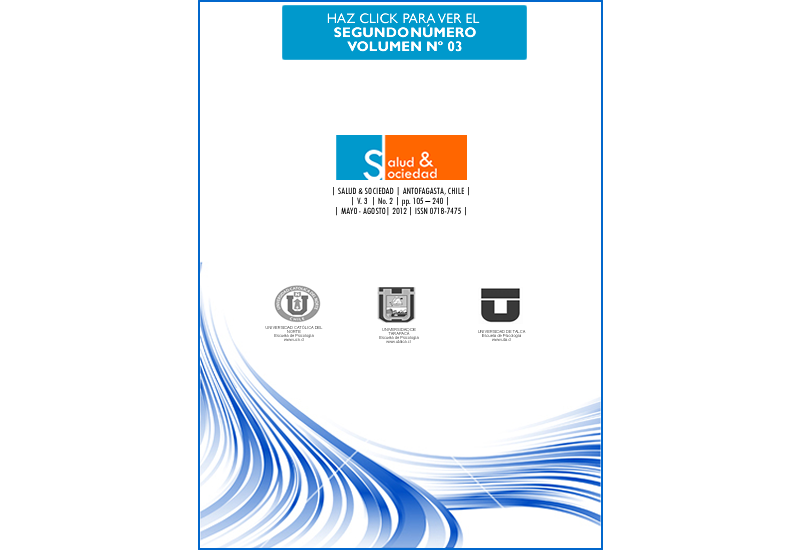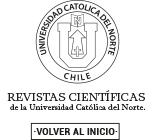Asuntos conceptuales, metodológicos y éticos de la hipnosis como terapia psicológica adjunta al tratamiento del cáncer de mama
DOI:
https://doi.org/10.22199/S07187475.2012.0002.00007Palabras clave:
Cáncer de mama, Hipnosis, Asuntos metodológicos y conceptuales, Breast cancer, Hypnosis, Conceptual and methodological issues,Resumen
La hipnosis ha formado parte de intervenciones psicológicas para atender los efectos de múltiples condiciones oncológicas y sus tratamientos. En este trabajo revisamos los principales resultados de la investigación existente en donde se utiliza la hipnosis en pacientes con cáncer de mama. En la primera parte se discuten asuntos conceptuales y metodológicos, en la segunda parte los hallazgos, limitaciones y asuntos éticos de la hipnosis en el debate de las prácticas psicológicas. En los estudios revisados se evidencia consistentemente que la hipnosis es eficaz para tratar el dolor, síntomas de ansiedad, sofocos (hot flashes), angustia previa a la biopsia de mama y efectos secundarios de la quimioterapia y radioterapia. El documento concluye con sugerencias para investigaciones futuras y las implicaciones para la práctica clínica y reconoce a la hipnosis como un recurso valioso para mejorar el estado de ánimo y la calidad de vida las pacientes de cáncer de mama.
Hypnosis is one of a number of psychological interventions which can be used to address the effects of multiple oncological conditions and treatments thereof. In this paper we review existing research results regarding the use of hypnosis in patients with breast cancer. In the first part we discuss conceptual and methodological issues. In the second part we discuss the findings, limitations and ethical issues of hypnosis in the on-going debate surrounding psychological practices. Consistent evidence exists in the reviewed research studies that hypnosis is effective in treating pain, anxiety symptoms, hot flashes, pre-breast biopsy anxiety, and the side effects of chemotherapy and radiotherapy. We conclude with suggestions for future research, implications for clinical practice, and the recognition of hypnosis as a valuable resource for improving both mood and quality of life of breast cancer patients.
Descargas
Referencias
Baker, F., Denniston, M., Zabora, J., Polland, A., & Dudley, W. N. (2002). A POMS short form for cancer patients: psychometric and structural evaluation. Psychooncology, 11(4), 273-281. doi: 10.1002/pon.564
Butler, L. D., Koopman, C., Neri, E., GieseDavis, J., Palesh, O., Thorne-Yocam, K. A., et al. (2009). Effects of supportive-expressive group therapy on pain in women with metastatic breast cancer. Health Psycholology, 28(5), 579-587. doi: 2009-14439-009[pii]10.1037/a0016124
Capafons, A. (1995). Entrevista a Irving Kirsch. Papeles del Psicólogo, 62, from www.cop.es
Carpenter, J. S. (2001). The Hot Flash Related Daily Interference Scale: A tool for assessing the impact of hot flashes on quality of life following breastcancer. Journal Pain Symptom Manage, 22,979-989.
Costa, P. T., & McCrae, R. R. (1992). Revised NEO personality inventory (NEO PI-R) and NEO five-factor inventory (NEO-FFI) professional manual. Odessa, FL: Psychological Assessment Resources.
Elkins, G., Jensen, M. P., & Patterson, D. R. (2007). Hypnotherapy for the management of chronic pain. International Journal Clinical Experimental Hypnosis, 55(3), 275-287.doi: 779406774[pii]10.1080/00207140701338621
Elkins, G., Marcus, J., Stearns, V., & Hasan Rajab, M. (2007). Pilot evaluation of hypnosis for the treatment of hot flashes in breast cancer survivors. Psychooncology, 16(5), 487-492. doi: 10.1002/pon.1096
Elkins, G., Marcus, J., Stearns, V., Perfect, M., Rajab, M. H., Ruud, C., et al. (2008). Randomized trial of a hypnosis intervention for treatment of hot flashes among breast cancer survivors. Journal of Clinical Oncology, 26(31), 5022-5026. doi: JCO.2008.16.6389[pii]10.1200/JCO.2008.16.6389
Green, J. P., Barabasz, A. F., Barrett, D., & Montgomery, G. H. (2005). Forging ahead: the 2003 APA Division 30 definition of hypnosis. International Journal of Clinical and Experimental Hypnosis, 53(3), 259-264. doi: U8G1558G377173LQ[pii]10.1080/00207140590961321
ISH. (2011). International Society Hypnosis. Codes ethics, from http://www.ishhypnosis.org/ish-codeethics.htm
Jemal, A., Siegel, R., Ward, E., Hao, Y., Xu, J., & Thun, M. J. (2009). Cancer statistics, 2009. Cancer Journal for Clinicians, 59(4), 225-249. doi:caac.20006 [pii] 10.3322/caac.20006
Kirsch, I., Lynn, S. J., & Rhue, J. W. (1993). Introduction to clinical hypnosis Handbook of clinical hypnosis. (pp. 3-22): Washington, DC, US: American Psychological Association.
Liossi, C. (2006). Hypnosis in cancer care. Contemporary Hypnosis, 23(1), 47-57.
Marchioro, G., Azzarello, G., Viviani, F., Barbato, F., Pavanetto, M., Rosetti, F., et al. (2000). Hypnosis in the treatment of anticipatory nausea and vomiting in patients receiving cancer chemotherapy. Oncology, 59(2), 100-104. doi: 12144[pii]
Mendoza, M. E., & Capafons, A. (2009). Eficacia de la hipnosis clínica: resumen de su evidencia empírica. Papeles del Psicólogo Retrieved 2, 30, from http://www.cop.es/papeles
Montgomery, G. H., Bovbjerg, D. H., Schnur, J. B., David, D., Goldfarb, A., Weltz, C. R., et al. (2007). A randomized clinical trial of a brief hypnosis intervention to control side effects in breast surgery patients. Journal of the National Cancer Institute, 99(17), 1304-1312. doi: djm106[pii]10.1093/jnci/djm106
Montgomery, G. H., David, D., Winkel, G., Silverstein, J. H., & Bovbjerg, D. H. (2002). The effectiveness of adjunctive hypnosis with surgical patients: a metaanalysis. Anesthesia and analgesia, 94(6), 1639-1645, table of contents.
Montgomery, G. H., Hallquist, M. N., Schnur, J. B., David, D., Silverstein, J. H., & Bovbjerg, D. H. (2010). Mediators of a brief hypnosis intervention to control side effects in breast surgery patients: response expectancies and emotional distress. Journal of Consulting and Clinical Psychology, 78(1), 80-88. doi:2010-00910-012 [pii]10.1037/a0017392
Montgomery, G. H., & Schnur, J. B. (2005). Eficacia y aplicación de la hipnosis clínica. Papeles del Psicólogo, 25(089), 3-8.
Montgomery, G. H., Weltz, C. R., Seltz, M., & Bovbjerg, D. H. (2002). Brief presurgery hypnosis reduces distress and pain in excisional breast biopsy patients. International Journal of Clinical and Experimental Hypnosis, 50(1), 17-32. doi: 10.1080/00207140208410088
Redd, W. H., & Andrykowski, M. A. (1982). Behavioral intervention in cancer treatment: controlling aversion reactions to chemotherapy. Journal of Consulting and Clinical Psychology, 50(6), 1018-1029. doi: 10.1037/0022-006x.50.6.1018
Registro Central de Cáncer de Puerto Rico. (2008). El cáncer de mama en Puerto Rico. Boletín del Registro de Cáncer de Puerto Rico, 4(1). Retrieved from http://www.salud.gov.pr
Richardson, J., Smith, J. E., McCall, G., Richardson, A., Pilkington, K., & Kirsch, I. (2007). Hypnosis for nausea and vomiting in cancer chemotherapy: a systematic review of the research evidence. European Journal of Cancer Care, 16(5), 402-412. doi: 10.1111/j.1365-2354.2006.00736.x
Rounsaville, B. J., Carroll, K. M., & Onken, L. S. (2001). A stage model a behavioral therapies research: Getting started and moving on from stage I. Clinical Psychology: Science and Practice, 8(2), 133-142.
Schnur, J. B., David, D., Kangas, M., Green, S., Bovbjerg, D. H., & Montgomery, G. H. (2009). A randomized trial of a cognitive-behavioral therapy and hypnosis intervention on positive and negative affect during breast cancer radiotherapy. Journal of Clinical Psychology, 65(4), 443-455. doi: 10.1002/jclp.20559
Schnur, J. B., & Montgomery, G. H. (2008). Hypnosis and cognitive-behavioral therapy during breast cancer radiotherapy: a case report. American Journal of Clinical Hypnosis, 50(3), 209-215.
Shacham, S. (1983). A shortened version of the profile of mood states. Journal of Personality Assessment, 47(3), 305-306. doi: 10.1207/s15327752jpa4703_14
Spiegel, D., & Bloom, J. R. (1983). Group therapy and hypnosis reduce metastatic breast carcinoma pain. Psychosomatic Medicine, 45(4), 333-339.
Spielberger, C. D. (1983). Manual for the state-trait anxiety inventory. Palo Alto, CA: Consulting PsychologistsPress, Inc.
Steggles, S. (1999). The use of cognitivebehavioral treatment including hypnosis for claustrophobia in cancer patients. American Journal of Clinical Hypnosis, 41(4), 319-326.
Stewart, A. L., & Ware, J. E. (1992). Measuring functioning and well-being: The medical outcomes study approach. Durham, NC: Duke University Press.
Zigmond, A. S., & Snaith, R. P. (1983). The hospital anxiety and depression scale. Acta Psychiatrica Scandinavica, 67(6), 361-370.
Descargas
Publicado
Número
Sección
Licencia
Los autores continúan como propietarios de sus trabajos, y pueden volver a publicar sus artículos en otro medio sin tener que solicitar autorización, siempre y cuando indiquen que el trabajo fue publicado originariamente en Revista Salud & Sociedad (ISSNe:0718-7475).



_(1).png)





